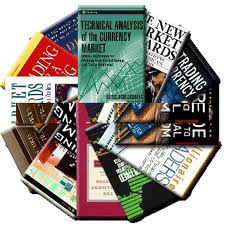Markets In Profile
IS THIS BOOK FOR YOU?
While this is a collaborative work, the rest of the preface and many of the experiences shared throughout the book are written from the perspective of lead author Jim Dalton, who has spent his career furthering his understanding and mastery of the markets.
As the lead author, I?m often asked if I?m writing for investors or traders. I believe such distinctions are in many ways arbitrary for there is no line where one stops and the other ends. It?s a spectrum, and every individual and every institution falls on a different point. That point changes constantly depending on the phase of activity. Even the longest-term investor should change his decision-making process in order to exit or enter a position. Trim, add, raise cash, change asset allocation?these are all timing decisions. In The Tipping Point, Malcolm Gladwell could have been writing about markets when he described crime as not ?a single discrete thing, but a word used to describe an almost impossibly varied and complicated set of behaviors.?
Perhaps you?re a growth investor. Or a value investor. Large cap, small cap?most institutional investors tend to pick a style and stick with it. The theories in this book are not dependant on the condition of the market, nor on what style is currently in favor. In fact, much of the power and appeal of these theories is that they are totally agnostic in terms of style, cap size, and asset class. The concepts you encounter are equally applicable to any style of investing, any timeframe, even any market, because the auction process works equally well for futures, real estate, art, even eBay.
The core idea is simple: all financial markets are measurable by time, price, and volume. This multidimensional approach to interpreting marketgenerated information enables you to differentiate between prices, because all prices are not equal. By extension, all opportunities are not equal, which is key in managing the probabilities of risk.
KNOW THE MARKET, KNOW YOURSELF,
MANAGE RISK
The world wants absolute answers. This is why we are being careful to note that whatweare suggesting is not an academic model to replace the efficient market hypothesis. The conundrum is that mathematics and factor-model approaches are more consistent than human intuition, but they don?t allow for enough flexibility to respond to rapidly changing market situations. They don?t allow you to distance yourself from competitors who apply similar models. It?s like watching the world championship of poker?all the good players know the odds. That?s why winning takes another level of understanding.
This book separates the market mechanism from the investor. While it is possible to describe the workings of any market within a single coherent framework, that knowledge represents only half of the equation. It is not enough to grasp how markets work; you must also understand how you take in and process information, and then execute based on that information. This concept has gained currency since ?Prospect Theory? established that we are not rational decision makers. Our emotions can weaken or completely eliminate our self-control . . . but we?ll save a thorough discussion of human behavior and neuroeconomics for a later chapter.
We?re simply suggesting that traditional fundamental analysis can be enhanced with real-time context?time, price, and volume. By interpreting analysis in relation to market-generated information, the investor can better understand the nature of change, which can positively influence trade location. Trade location is the key to controlling risk and taking advantage of asymmetric opportunities that occur within developing market structure. In recent years, the bifurcation of the brain has been explored thoroughly in popular media. We are not the first to suggest that successful investing (or successful anything) incorporates both sides of the brain.
